
Arrhenatherum, commonly called oatgrass or button-grass, is a genus of Eurasian and North African plants in grass family.
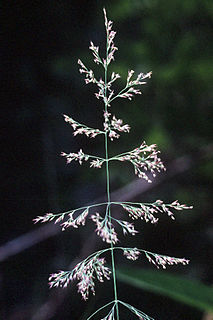
Calamagrostis is a genus of flowering plants in the grass family Poaceae, with about 260 species that occur mainly in temperate regions of the globe. Towards equatorial latitudes, species of Calamagrostis generally occur at higher elevations. These tufted perennials usually have hairless narrow leaves. The ligules are usually blunt. The inflorescence forms a panicle. Some may be reed-like.

Fallopia is a genus of about 12 species of flowering plants in the buckwheat family, often included in a wider treatment of the related genus Polygonum in the past, and previously including Reynoutria. The genus is native to temperate and subtropical regions of the Northern Hemisphere, but species have been introduced elsewhere. The genus includes species forming vines and shrubs.

Helictotrichon, or alpine oatgrass, is a genus of perennial flowering plants in the grass family. The genus name comes from the Greek heliktos meaning twisted, and trichos meaning spine, referring to the shape of the awn.
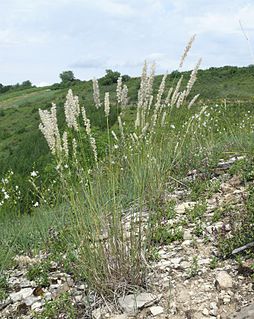
Melica is a genus of perennial grasses known generally as melic or melic grass. They are found in most temperate regions of the world.
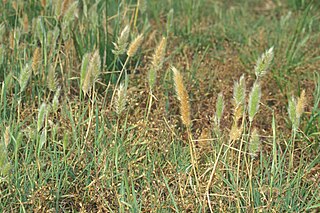
Polypogon is a nearly cosmopolitan genus of plants in the grass family, commonly known beard grass or rabbitsfoot grass.

Puccinellia is a genus of plants in the grass family, known as alkali grass or salt grass.

Rostraria is a genus of plants in the grass family, native primarily to Eurasia and North Africa with one species native to South America. Hairgrass is a common name.
Austrofestuca, called beach fescue, is a genus of Australian and New Zealand plants in the grass family. The only accepted species is Austrofestuca littoralis, native to seacoast regions in Australia and New Zealand.
Australopyrum is a genus of plants in the grass family, native to Australia, New Zealand, and New Guinea.
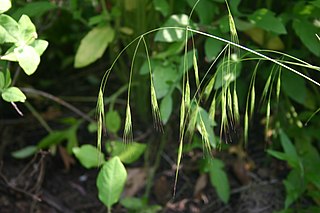
Schizachne is a genus of Eurasian and North American plants in the grass family. The only accepted species is Schizachne purpurascens, commonly called false melic. Three subspecies are recognized:

Cleistogenes serotina is a species of grass in the family Poaceae, native to Europe and temperate Asia. Culms are geniculately ascending, 1 mm in diameter, and 30–60 cm in height. Leaf-blades are spreading, flat, or involute, from 4–8 cm long and 3–5 mm wide.

Festuca polesica is a species of grass, a perennial bunchgrass native to the sand dunes of northern Europe.

Helictotrichon pratense, known as meadow oat-grass, is a species of perennial grass in the family Poaceae, found in temperate parts of Europe, North Africa, and Asia. Its culms are erect and 30–85 cm long; leaves are mostly basal. It is restricted to shallow, calcareous soils such as those formed on chalk and limestone substrates.
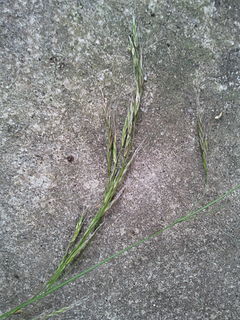
Festuca gigantea, or giant fescue, is a plant species in the grass family, Poaceae. Because this and other members of Festuca subgenus Schedonorus have more in common morphologically with members of the genus Lolium than with Festuca and often produce fertile hybrids with other Lolium species, Festuca gigantea has been recently published as Lolium giganteum(L.) Darbysh. (1993) and then as Schedonorus giganteus(L.) Holub (1998). Sources vary as to which placement is more acceptable.
Hyalopoa is a genus of Asian plants in the grass family.
× Arctodupontia is a nothogenus of Arctic and Subarctic plants in the grass family. The only known nothospecies is ×Arctodupontia scleroclada, found in the colder regions of Eurasia and North America. It is believed to have originated as a hybrid of two other arctic grasses: Arctophila fulva × Dupontia fisheri.
Pucciphippsia is a genus of Arctic plants in the grass family, reported from Greenland, Svalbard, and Magadan.

Leymus akmolinensis is a species of grass endemic to Russia and Kazakhstan.

Stipa zalesskii is a grass found in Europe and Asia. It is an important grass in Eurasian steppe. Its culms are 30–75 cm long and the leaf-blades 20–35 cm long by 0.6–1 mm wide.














